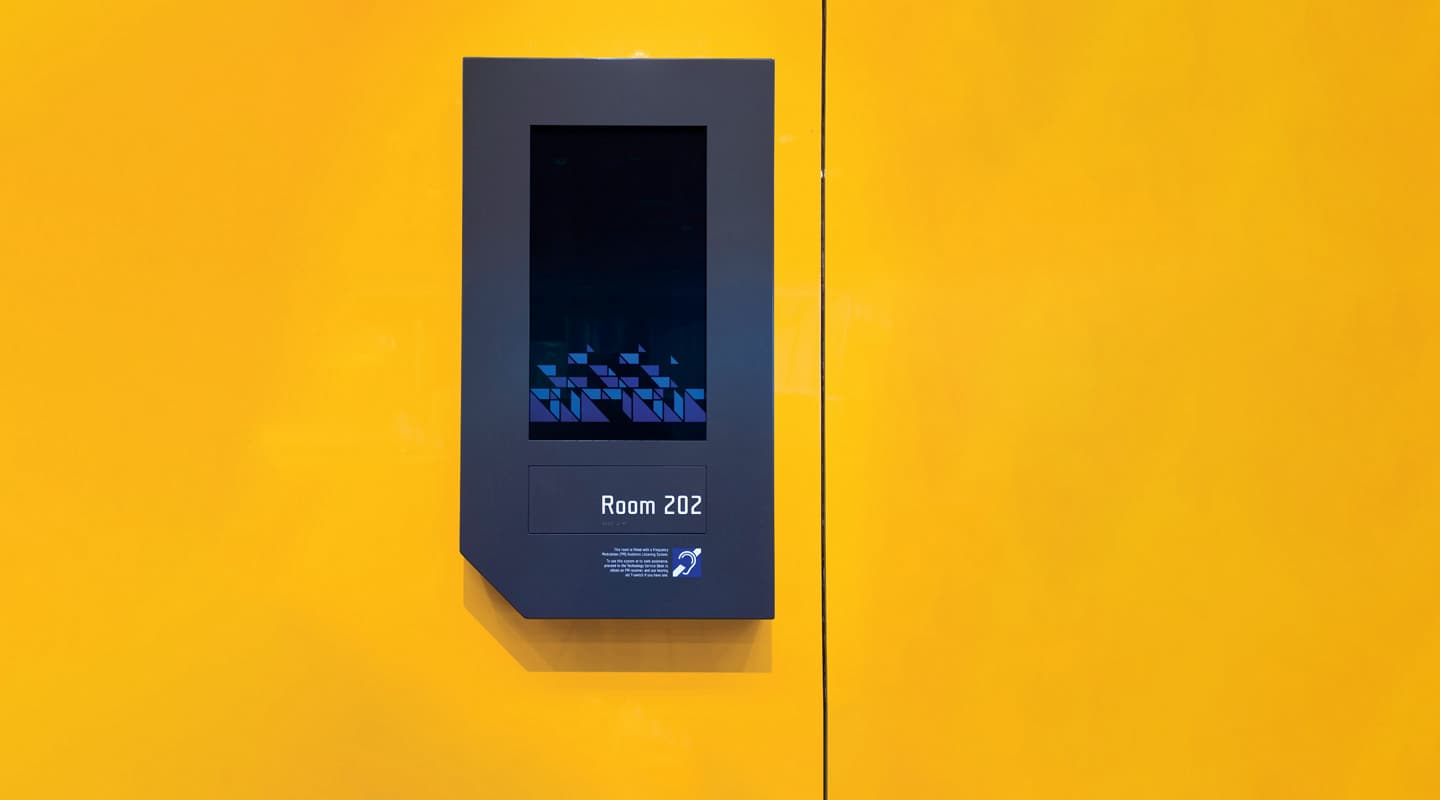
MCEC Meeting Rooms
The Plenary Hall may win the plaudits but it’s the 32 meeting rooms that will make or break a big conference. AV takes a much closer look.
Text:/ Andy Ciddor
Images:/ Rutledge Engineering
Despite the impressive plenary hall, the grand sweeping public spaces of the foyers, the acres of digital signage and the stunning views across the Yarra to the city, the real beating heart of the Melbourne Convention Centre is the 32 meeting rooms that do the work of hosting luncheons, business meetings, working breakfasts, seminars, conventions, lectures, celebrations, symposia, cocktail parties, presentations, inquiries, banquets, public meetings, training sessions, dinners, demonstrations, awards presentations, product launches, dinner parties, afternoon teas and ceremonies of all kinds.
One of the key planning decisions taken about the meeting rooms is that every space would come fully-equipped with the presentation facilities required for the majority of activities likely to take place. Not only would these facilities be bundled into the booking cost, but they would be available to the hirer with virtually no effort from the MCEC staff and therefore very little set up or turnaround time. To ensure this really does happen, every meeting space has a full complement of dedicated, installed equipment, waiting to be activated and configured for any given booking.
FOYERS
Even ‘empty’ foyer and pre-function spaces are fully equipped with food and beverage docking stations awaiting the connection of the appropriate mobile bar or servery for any given occasion. Overhead are quality JBL ceiling speaker systems that can be allocated to zones and fed the required program sources, which may include inputs from the embedded Shure UR series UHF radio mic receivers spread throughout the foyer ceilings. There is a pool of handheld and lavalier radio microphones available for use in these spaces.
At the suggestion of Rutledge Engineering during the design process, all ceiling speakers in the MCEC are part of a unique dual-function network that not only provides background music, paging and event-specific zoned sound, but is also an evacuation and emergency warning system. Built on a Bosch Praesideo framework and driven by about 45kW of Praesideo 100V line amplifiers, the network of some 1000 JBL Control series speakers, together with another 1500 or so four-inch Bosch ceiling speakers, is powered through uninterruptible power supply (UPS) units. All elements of the system are linked by fire-rated cables and optical fibres to meet the stringent survivability requirements of an emergency announcement system.
In an effort to keep visitors thoroughly informed of their whereabouts, it seems that every doorknob, staircase, escalator and wall in the MCEC carries digital directional and informational signage. Ranging from 19-inch LCD screens and slender, rear-projected glass panels to walls of Barco iLite LED tiles, each screen is driven by a local Wincomm signage player.

two rectangular meeting rooms joined together. The duplicated sets of speakers for long mode and wide mode can be seen in each room. The retracted wide mode screen for the right hand room is also visible. Note also the diagonally oriented fluorescent light fixtures.
MEETING ROOMS
Every meeting room has a complete, but easily expandable (and eventually also easily upgradeable) AV system that meets the requirements for most types of bookings. The facilities include a standard (but by no means ordinary) MCEC lectern, a motorised rolldown 16:9 LP Morgan screen, a Barco HD projector (either an 8000 ANSI lumen CLMHD8+ or a 5000 ANSI lumen iD H500), a Sony HD 3CCD PTZ (pan/tilt/zoom) camera, and a pair of Nexo speakers (PS8 or PS10). In the equipment rack for each room is the HP presentation PC, a Yamaha Blu-ray HD DVD/CD player, an Amino A130 IPTV set top box, an Extron ISM 824 scaling multiswitcher, a Biamp AudiaFlex audio DSP and a small stack of distribution amplifiers, and UTP and fibre transceivers.
In the half dozen meeting rooms that have panoramic windows looking out over the vista of the river and the city, projected video would be overwhelmed by incident light in the daytime, so these rooms have instead been equipped with Panasonic 103-inch HD plasma screens.
Each room is controlled by a wireless AMX touchpanel with a standardised menu system, talking to the Netlinx control processor that runs the space. The AMX system controls video and audio source selection, IPTV channel selection, projection screens, video replay, audio levels, video conferencing, air conditioning, the Dynalite room lighting controls and the PTZ camera. In the case of rooms that can be joined or divided, the AMX system is programmed to seamlessly pick-up or hand over control, without any change of user interface. Perhaps the most important function on the AMX panel is the Help button that summons technical assistance from the duty control room technician.
Incorporated into the flexibility of many rectangular meeting rooms is the ability to rapidly re-orient the space from being a long room with the presentation at the end to become a wide room with the presentation in the centre of a long wall. To achieve this, there are duplicate motorised screens and speakers, and lectern outlets at both presentation positions, plus duplicate data, signal, control and power outlets at the control positions in these spaces. The one fixed item that isn’t duplicated is the Barco HD projector, which is mounted at the centre point of the room and manually rotated (a quick and relatively painless process, performed by an AV tech on an elevated work platform) into the appropriate orientation. In keeping with the flexibility of orientation of these spaces, the fluorescent lighting fixtures are placed at 45° to the axis of the room, rather than the more usual alignment, which is across work surfaces.

A standard MCEC lectern with its dual touch screens, gooseneck mics, cough button, direct USB socket and discreet LED document lighting.

Meeting room racks in a local control room.
LECTERN FOR THE BETTER
Every meeting room and each part of the plenary hall is equipped with an identical presenter’s lectern designed and fabricated for the MCEC by local design firm Sakimoto. The lectern’s most striking features are its two touchscreens. The first of these is actually the docking station for the room’s AMX Modero wireless touchpanel which consolidates all of the rooms’ control functions.
The other screen is the 20-inch ELO IntelliTouch panel connected to the room’s HP presentation PC. Rather than expecting the presenter to provide the usual laptop computer to handle screen presentations and speaker support, the MCEC philosophy of providing all necessary facilities includes providing a well maintained, virus-free, fully configured and ready-to-go presentation PC built right into the lectern. While the computer is actually located in the room’s equipment rack in the local control room, all video, keyboard, pointing, and serial devices are remoted back to the control room via UTP cable using a Magenta universal MultiView Utx-SA. In addition to the touchscreen there’s a full-sized Cherry keyboard secreted in a drawer. Speakers can upload the data for their presentations from any of the speaker preparation rooms around the centre or if they wish, run the presentation directly from any USB memory device (Flash RAM, hard disk or even an optical drive) via the lectern’s built-in Belkin network USB hub. If the speaker insists on using their own computer on the lectern, video and audio can be inserted into the room’s AV systems via the MultiView interface.
The lectern also sports a pair of Shure gooseneck-mounted MX418/C condenser microphones, a mic mute button, discreet LED lighting for the speaker’s notes, a windowed front panel for custom artwork, and a pair of foldout cup holders.

Master Control, showing monitor wall, master AMX Modero touch panel and control computer. The top row of monitors show (left to right) dedicated feeds from both cameras in the Grand Banquet room and all three Plenary cameras. The last monitor is a switchable preview of the in-house IPTV system. The three 47-inch LCD panels display the incoming meeting room camera feeds aggregated by the Avitech VCC-800c video command centres in each of the local control rooms. All video everywhere in the MCEC is full 1920 HD. The standard MCEC dual redundant uninterruptable power supplies can be seen nestled under the monitor wall.
CONTROL CENTRAL
The amount of audiovisual, communications and information technology required for the operation of the meeting spaces, preparation areas, management and administration offices and public spaces at the MCEC is quite staggering. Although Rutledge Engineering in its consulting role with MCEC took great care to keep complexity to an absolute minimum by moving the majority of the system to Internet Protocol-based formats carried over redundant optical fibre rings, there’s no getting over the sheer quantity of equipment to monitor, maintain and support. With the facility in full operation there are just too many systems spread over too large a physical area for operations to be efficiently supported from a single operations room.
From the perspective of a building constructed on principles of energy and materials efficiency, a single central control and management point would have entailed vast additional amounts of cabling and construction materials and would have resulted in substantial time and access inefficiencies throughout the operational lifetime of the centre.
The chosen cabling and management topology for MCEC is a two layered star structure.
In the first layer there are three control rooms that each form the central equipment and management hub for about a dozen meeting rooms and associated spaces. In each of these control rooms there is a dedicated rack of equipment for each of the connected rooms, together with shared facilities, including system monitoring and the housing of the local technical support and operations staff. Each of the three control rooms can operate independently to monitor, configure, operate and provide timely support to the rooms in their immediate area. These control rooms also link to the unmanned (cold and noisy) server room, where the main communications entry points, shared data processing, transcoding, conferencing gateways, storage systems and central signal routing facilities are located.
The second layer is the star formed by the master control room which is connected to each of the three local control rooms. Master control, which is attached to the central management and booking offices, maintains an overview of the activities in every one of the rooms in the MCEC and, if necessary, master control operators can remotely access the equipment in the local control rooms to assist in time of overload or in quiet times when there is no need for operations staff in all control rooms.
BACKROOM HEADLINES
As the newest, biggest and greenest convention centre in the southern half of the world, MCEC has lots of headline grabbing features going for it, but it’s the careful planning for the long-term operational capabilities of the centre that will see it ticking over, year after year, requiring minimal staff intervention to service high usage at a high standard, and will make MCEC a success, long after someone else opens a newer and shinier venue.
SUPPLIERS
AMX: sales@amxaust.com.au or www.amx.com.au
Audio Products Group (Biamp): 1300 134400 or www.audioproducts.com.au
Barco: (03) 9646 5833 or sales.au@barco.com
Bosch Communications: (02) 9638 4752 or boschcomms@au.bosch.com
Combitel (Amino): (03) 8676 5300 or www.combitel.com.au
Group Technologies (Nexo, Camco): (03) 9354 9133 or sales@grouptechnologies.com.au
Herma Technologies (LP Morgan): 1300 730 025 or info@herma.com.au
IDT (Magenta): (02) 9417 4924 or sales@idt.com.au
Jands (JBL, Shure): (02) 9582 0909 or info@jands.com.au
Lightmoves (Philips Dynalite): (03) 9701 2500 or sales@lightmoves.com.au
Panasonic: 132600 or www.panasonic.com.au
RGB Integration (Extron): 1800 398766 or rgbintegration.com
Sony: www.sony.com.au
Yamaha: www.yamahamusic.com.au


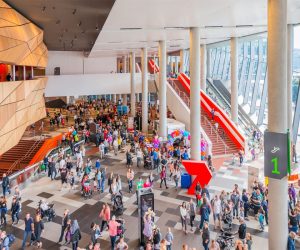
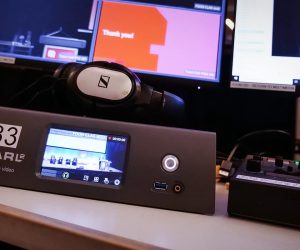

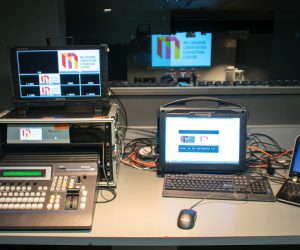


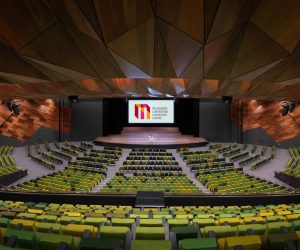






RESPONSES